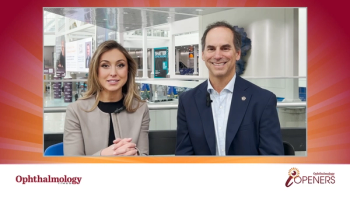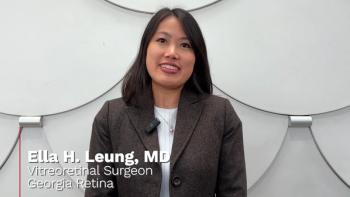
- Ophthalmology Times: March 1, 2021
- Volume 46
- Issue 4
Moving forward: Does science progress one funeral at a time?
A word from Chief Medical Editor Peter J. McDonnell, MD.
By the time I went off to college I had narrowed my career aspirations to 1 of 3 paths: physics, engineering, or medicine.
The appeal of a life spent in a scientific field was that truth was knowable and although falsehoods and mistaken beliefs might temporarily gain favor, additional experimentation using the scientific method would ultimately prove them false and the bad ideas would be swept aside.
Scientific knowledge does advance. But often this is not the result of a brilliant new paper being published. Rather, as German physicist Max Planck somewhat cynically declared, science advances one funeral at a time.
Previously by Dr. McDonnell:
Planck noted “a new scientific truth does not triumph by convincing its opponents and making them see the light, but rather because its opponents die, and a new generation grows up that is familiar with it.”1
I have witnessed this phenomenon. I was a medical student when a pair of Australian physicians proposed that duodenal ulcers were not the result of acid hypersecretion but were caused by a bacterial infection, only to be ridiculed.2
Not because others performed experiments to test the hypothesis and found it to be incorrect but because “everybody knows” ulcers are caused by acid. It took some 20 years, but we came to accept Helicobacter pylori as the culprit.
Similarly, my chairman during my ophthalmology residency, Arnall Patz, MD, observed while he was an ophthalmology resident that a high percentage of low birth weight premature babies that developed a disease called retrolental fibroplasia (what we now know as ROP) had been given pure oxygen to breathe.3
Also by Dr. McDonnell:
He hypothesized a causal relationship and designed a clinical trial to prove his hypothesis. National Institutes of Health reviewers called him unscientific and blocked the trial.
When the trial did start, nurses raised the oxygen back to 100% after Arnall had lowered it in some of the babies.
This was discovered, the study was conducted, and Patz was proven correct. The findings were not accepted, and yet another study confirmed toxicity from pure oxygen.3
Anecdotes like these may be interesting to talk about over cocktails, but are there any “scientific” data to support Plank’s idea about funerals?
Interestingly, there are! In a 2019 paper in American Economic Review,4 Azoulay et al examined whether the premature death of eminent scientists caused measurable changes in the literature of those fields.
Related:
They found that when the “star” scientist is alive, outsiders are reluctant to challenge their ideas. But the star’s death is followed an infusion of new ideas.
To me, the cautionary tale here is that senior famous people must be on guard that they do not become impediments to progress and the ideas of their junior colleagues.
References
1. Coy P. Science advances one funeral at a time. The latest Nobel proves it. Bloomberg Businessweek. October 10, 2017. Accessed February 19, 2021. . Available at:
2. GI Society. Inside Tract. Nobel prize for H.pylori Discovery.2005 Nov/Dec;152.
3. Brown D. Establishing proof. The Washington Post. April 19, 2005. Accessed February 19, 2021. Available at:
4. Azoulay P, Fons-Rosen C, Zivin JSG. Does science advance one funeral at a time? Am Econ Rev. 2019 Aug;109(8):2889-2920.
Articles in this issue
almost 5 years ago
Light-adjustable IOL offers positive refractive results in patientsalmost 5 years ago
Raising the retinal disease treatment bar with genetic testingalmost 5 years ago
Gene therapy heralds new era for inherited retinal diseasesalmost 5 years ago
Targeted cancer therapy linked with adverse ocular eventsalmost 5 years ago
Investigators uncover health care disparities among US patientsalmost 5 years ago
Surgery for external ocular diseases: Managing common presentationsalmost 5 years ago
Corneal transplantation experiences a revolutionalmost 5 years ago
In-home self-monitoring of AMD patients identifies retinal fluidalmost 5 years ago
Tips to chart a course for safe, effective refractive surgeryNewsletter
Don’t miss out—get Ophthalmology Times updates on the latest clinical advancements and expert interviews, straight to your inbox.















































